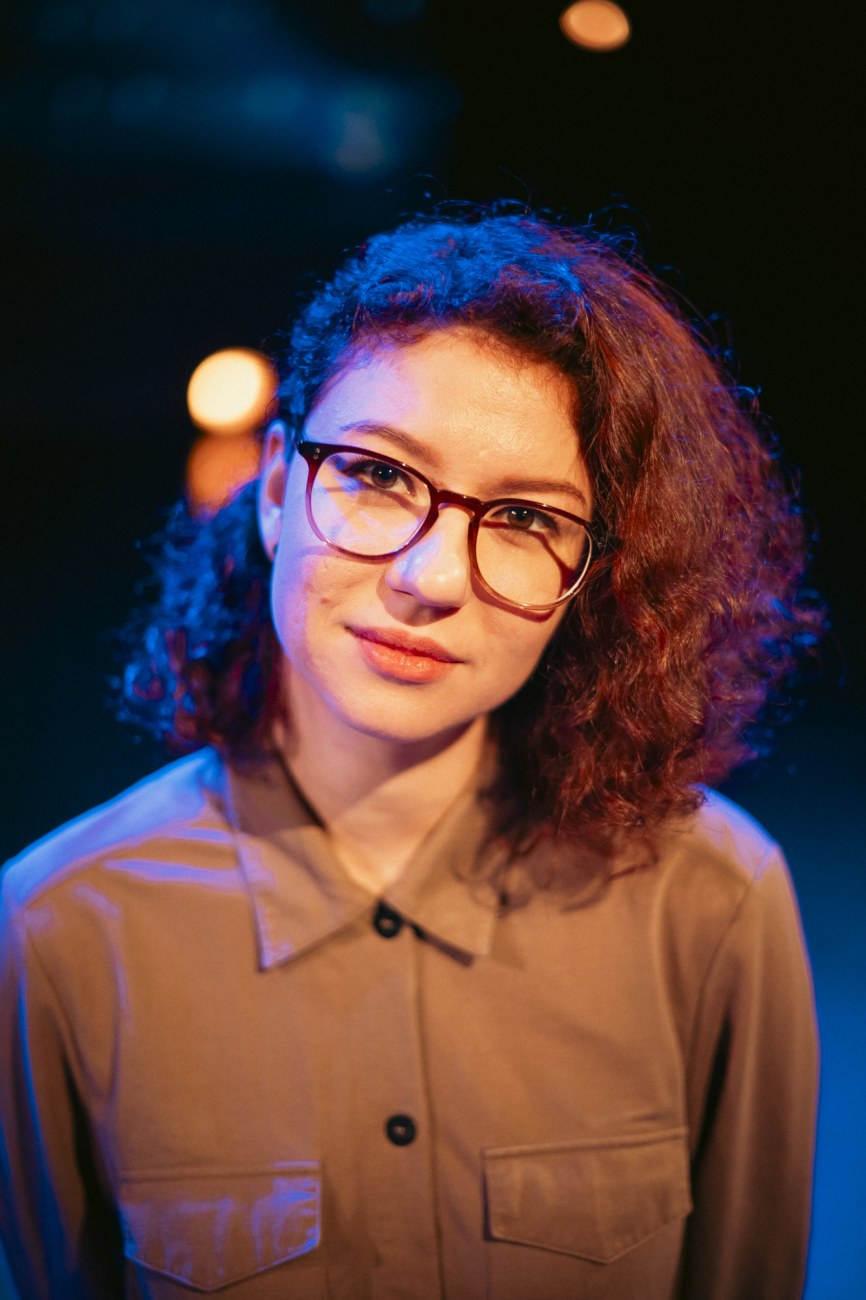Abby Rurenko is making workplaces safer with wearable technology

Born in Ukraine, Albina “Abby” Rurenko's academic journey has taken her from the universities of Saint Petersburg and Copenhagen to Aalto University, and finally to Tampere University as a doctoral researcher in the interdisciplinary CONVERGENCE of Humans and Machines project. By merging the fields of natural sciences and engineering with social and humanistic sciences, CONVERGENCE aims to narrow the divide between technology and people, reshaping our perception of human and technology interaction.

Rurenko's interest in studying the intersection between technology and humanity was ignited by the controversies surrounding the topic. "I wanted to make sure I’m on the 'right' side, technology for good rather than for addictive pleasure," she expresses. The relevance of her research field also inspired her, “Now the people who are researching human-technology interaction and human augmentation specifically are the ones who are shaping that future. The opportunity was thrilling.”
Her research focuses on developing wearable technology to improve safety and efficiency in construction work. By using smart glasses, workers can seamlessly access context-sensitive information, reducing the need to resort to smartphones in risky situations. Her aim is to create a model that's adaptable to different construction contexts, and potentially other industries, where collaboration and safety are paramount.
Rurenko believes that future interaction with technology will be more natural, occurring through gazes, gestures, and speech, eliminating the need for physical touch.
My aim is to create a model of a wearable system that will alert workers when they are in potentially hazardous situations and provide them with relevant information needed for work seamlessly, so that they don’t need to reach for their phone when hands are busy.
Abby Rurenko
Rurenko feels that the interdisciplinary environment of the CONVERGENCE project offers fresh perspectives that challenge her own thinking. “Their thought patterns are different, angles of views are different, so they can be a great source of inspiration and ideas,” she reflects on her interaction with colleagues.
Rurenko’s own background is also interdisciplinary. She started her studies in computer science. During her exchange year, Rurenko attended a course on cognitive modelling by Dario Salvucci at the University of Jyväskylä, which significantly influenced her academic path. “It was not related to my specialisation at the time, but I took it because of curiosity. The course stuck with me at some subconscious level, and I started reading popular science books about the brain. At some point reading stopped satisfying me and I realised that I wanted to do research," she recalls. This interest led her to pursue a master's in cognitive science in Denmark.
Returning to Finland feels natural for Rurenko. “I have previously studied as an exchange student and worked in research here. I have relocated to Finland once more with a feeling of returning to my calm, safe place. I am also grateful for the opportunity for my husband to come here too and support me.”
This series of articles introduces the doctoral researchers of the CONVERGENCE project at Tampere University, an initiative blending natural sciences and engineering with social sciences and humanities. CONVERGENCE aims to bridge the gap between technology and humanity, exploring areas like affective computing, augmented reality, and AI. You can read more on the project website.
Funded by the Jane and Aatos Erkko Foundation.
Text and photos by Antti Yrjönen
Stage and lights by Carlos Portilla Lopez
Venue Teatterimonttu, Tampere University, City Centre Campus












